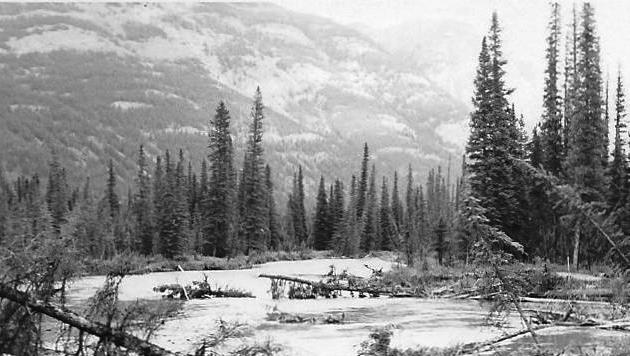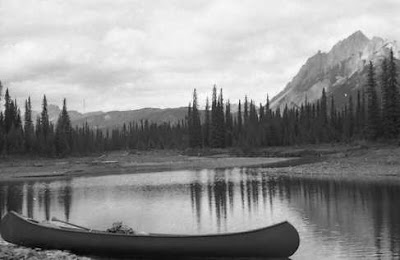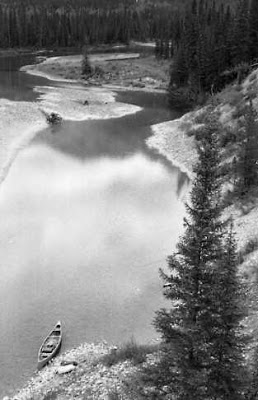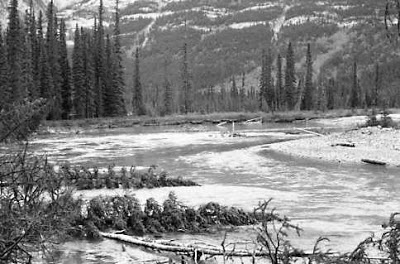 It is traditional in Lake of the Woods Country to stop at noon on some rocky shore, fillet a couple of fresh caught walleye, and cook up a delicious shore lunch. In this little tale, events occurred near Sioux Narrows, Ontario.
It is traditional in Lake of the Woods Country to stop at noon on some rocky shore, fillet a couple of fresh caught walleye, and cook up a delicious shore lunch. In this little tale, events occurred near Sioux Narrows, Ontario.
The fishing party was made up of a number of American Professional Football players who came to Canada on a weekend fishing trip. Included in the group was the teenage brother of one of the players. The three boats had all been pulled up on a poplar lunching spot and after lunch the men were laying around having a short rest before getting back to an afternoon of fishing.
Without asking anyone, the teen ager, who was a very large young man, dragged one of the fishing boats off the beach an headed out on the lake for a joy ride. At first he drove up and down in a normal manner but soon picked up the pace and raced around in figurer eights or various sized circles.
Two older were fishing from a boat near by and on a couple of occasions the teenager raced past around them rocking, their boat and disturbing the tranquility of their fishing.
Not satisfied with his antics and deaf to the pleas of his fishing group on shore, he changed position and moved back so that he was sitting on the back of the boat, partly on the transom and partly on the side of the boat. This resulted in the front of the boat sitting very high in the water and created greater waves as he continued his antics.
During one of his steep sudden turns the boy fell out of the boat backwards, into the wave churned lake. The motor tiller was sharp to one side so the boat continued on at high speed in small circles. As the boy struggled in the water to stay afloat the boat started to circle him. On about the third circle the boat ran directly over the swimmer, head on.
The men on shore standing watching the antics then ran for their boats. The two fishermen that were close to the accident, both threw their fishing rods overboard, started their boat, and raced to the scene. The boat was still racing around in circles so they had some difficult in getting along side the injured boy.
When they reached him he was surrounded in a cloud of red bloody water. Because of his size they had trouble hauling him into the boat. They were shocked to see he had been hit in the face with the propeller and had three open lacerations on the front of his face. One on a diagonal line across his forehead, one over bridge of his broken nose and the third across his mouth. He was stunned with shock and difficult to deal with
His brother soon arrived in another boat and they quickly headed back to the tourist camp for help. The boy eventually got medical help in Kenora, Ontario and received a lengthy series of treatments. He fully recovered but was left with some scars.
A short length of time after the incident a lawyer on the boys behalf sued the tourist camp for providing a faulty boat and motor and asked for a great deal of money for medical attention as well a money for pain and suffering.
The two fishermen witnesses who were close to the entire event, and each suffered the loss of expensive fishing gear, willingly gave a statement at to what occurred and the entire case was thrown out of court.



 As the back of the house shows the firemen made a gallant attempt to save the child in the bedroom, only to find she was in the living room at the time of the fire. During the rest of the investigation it was determined the father had been drinking and fell asleep in the living room with the fireplace going.
As the back of the house shows the firemen made a gallant attempt to save the child in the bedroom, only to find she was in the living room at the time of the fire. During the rest of the investigation it was determined the father had been drinking and fell asleep in the living room with the fireplace going.














